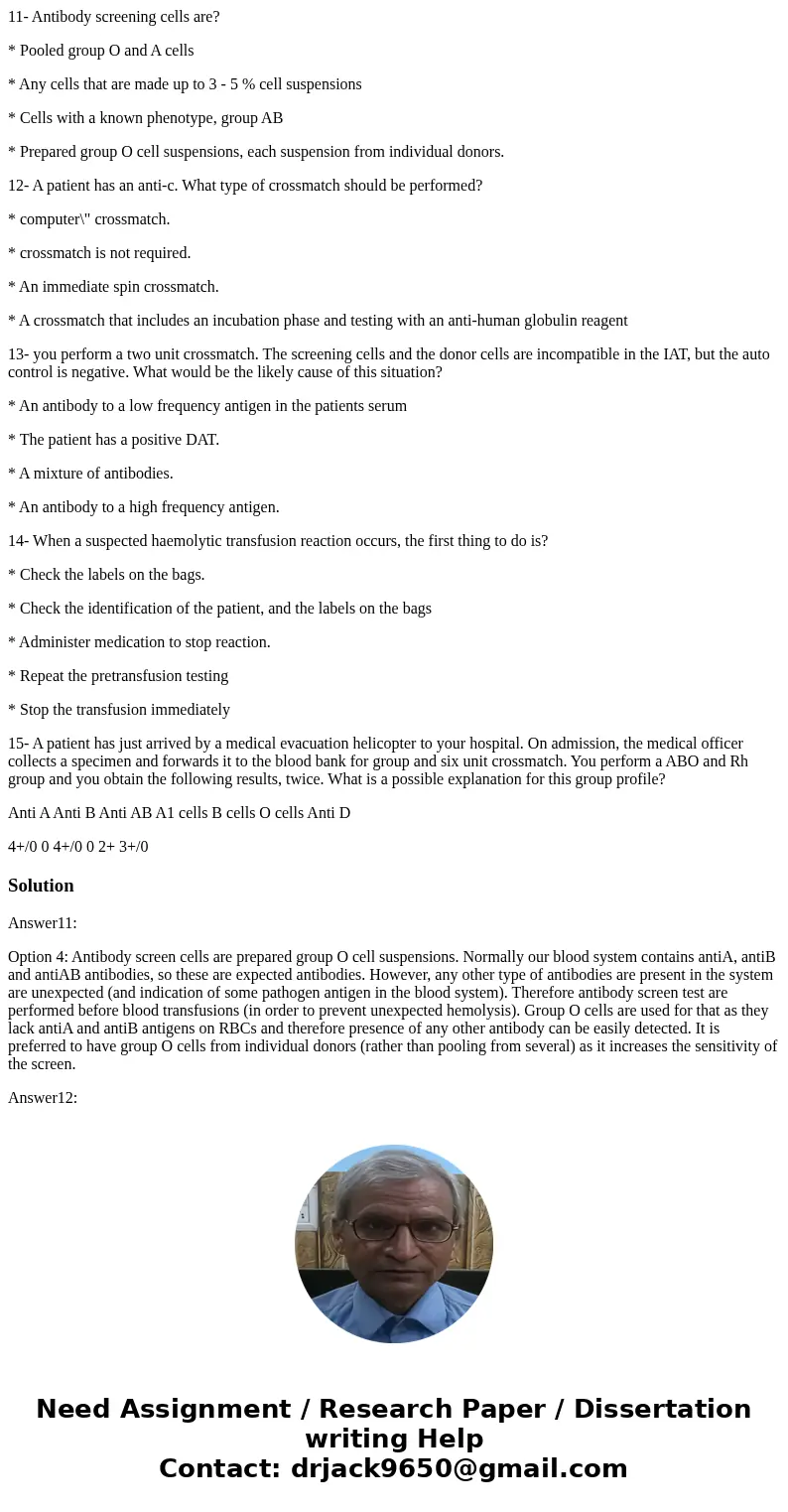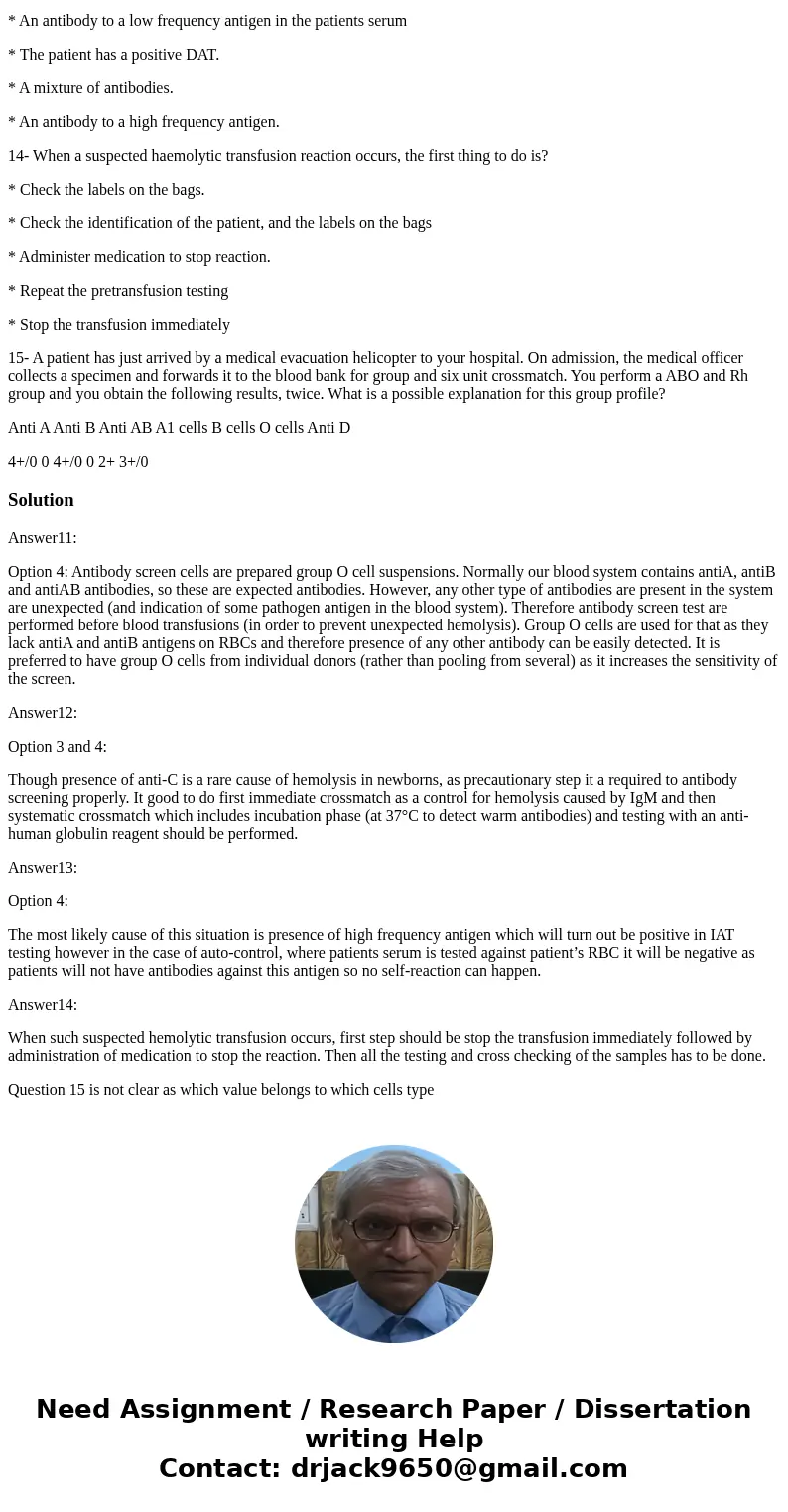11 Antibody screening cells are Pooled group O and A cells
11- Antibody screening cells are?
* Pooled group O and A cells
* Any cells that are made up to 3 - 5 % cell suspensions
* Cells with a known phenotype, group AB
* Prepared group O cell suspensions, each suspension from individual donors.
12- A patient has an anti-c. What type of crossmatch should be performed?
* computer\" crossmatch.
* crossmatch is not required.
* An immediate spin crossmatch.
* A crossmatch that includes an incubation phase and testing with an anti-human globulin reagent
13- you perform a two unit crossmatch. The screening cells and the donor cells are incompatible in the IAT, but the auto control is negative. What would be the likely cause of this situation?
* An antibody to a low frequency antigen in the patients serum
* The patient has a positive DAT.
* A mixture of antibodies.
* An antibody to a high frequency antigen.
14- When a suspected haemolytic transfusion reaction occurs, the first thing to do is?
* Check the labels on the bags.
* Check the identification of the patient, and the labels on the bags
* Administer medication to stop reaction.
* Repeat the pretransfusion testing
* Stop the transfusion immediately
15- A patient has just arrived by a medical evacuation helicopter to your hospital. On admission, the medical officer collects a specimen and forwards it to the blood bank for group and six unit crossmatch. You perform a ABO and Rh group and you obtain the following results, twice. What is a possible explanation for this group profile?
Anti A Anti B Anti AB A1 cells B cells O cells Anti D
4+/0 0 4+/0 0 2+ 3+/0
Solution
Answer11:
Option 4: Antibody screen cells are prepared group O cell suspensions. Normally our blood system contains antiA, antiB and antiAB antibodies, so these are expected antibodies. However, any other type of antibodies are present in the system are unexpected (and indication of some pathogen antigen in the blood system). Therefore antibody screen test are performed before blood transfusions (in order to prevent unexpected hemolysis). Group O cells are used for that as they lack antiA and antiB antigens on RBCs and therefore presence of any other antibody can be easily detected. It is preferred to have group O cells from individual donors (rather than pooling from several) as it increases the sensitivity of the screen.
Answer12:
Option 3 and 4:
Though presence of anti-C is a rare cause of hemolysis in newborns, as precautionary step it a required to antibody screening properly. It good to do first immediate crossmatch as a control for hemolysis caused by IgM and then systematic crossmatch which includes incubation phase (at 37°C to detect warm antibodies) and testing with an anti-human globulin reagent should be performed.
Answer13:
Option 4:
The most likely cause of this situation is presence of high frequency antigen which will turn out be positive in IAT testing however in the case of auto-control, where patients serum is tested against patient’s RBC it will be negative as patients will not have antibodies against this antigen so no self-reaction can happen.
Answer14:
When such suspected hemolytic transfusion occurs, first step should be stop the transfusion immediately followed by administration of medication to stop the reaction. Then all the testing and cross checking of the samples has to be done.
Question 15 is not clear as which value belongs to which cells type


 Homework Sourse
Homework Sourse